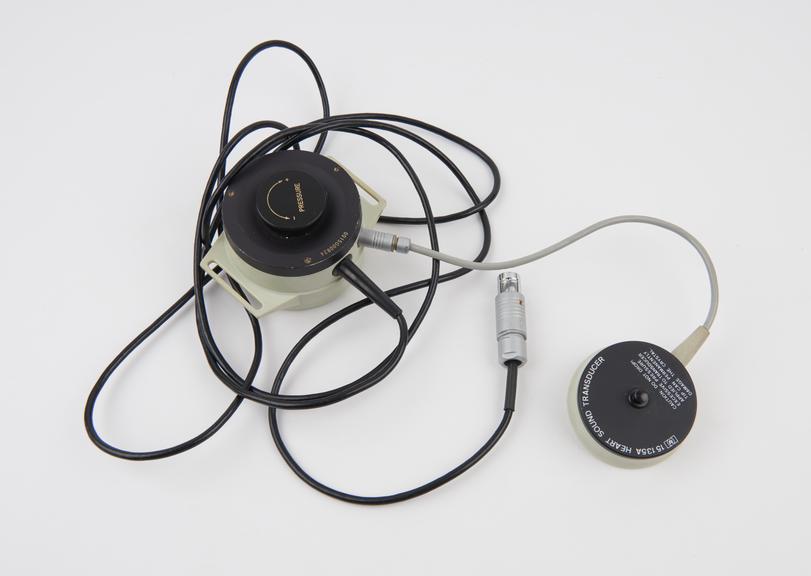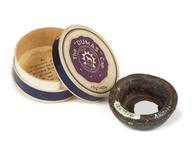

Transducer for uterine contractions, England, 1960-1970
- maker:
- Hewlett Packard Company




Transducer for uterine contractions, by Hewlett Packard, 1960-1970.
Uterine contractions are surging muscle spasms a woman feels during childbirth. A transducer can be introduced into the uterus to measure the contractions. This lets doctors monitor the birthing process. This transducer works in conjunction with a heart monitor to record the baby’s heart rate. Both pieces of technology are associated with the growing medicalisation of childbirth during the 20th century.
Transducers are often called probes. They come in different shapes and sizes for different scanning situations. This example was made in England by the Hewlett Packard Company during the 1960s.
Details
- Category:
- Obstetrics, Gynaecology & Contraception
- Object Number:
- 1989-420
- Measurements:
-
overall (small disk: 20 mm 50 mm,
overall (large disk): 55 mm 60 mm, .378kg
overall (lead): 2034 mm
- type:
- transducer
- credit:
- Queen Charlotte's Hospital. Institute of
Parts






